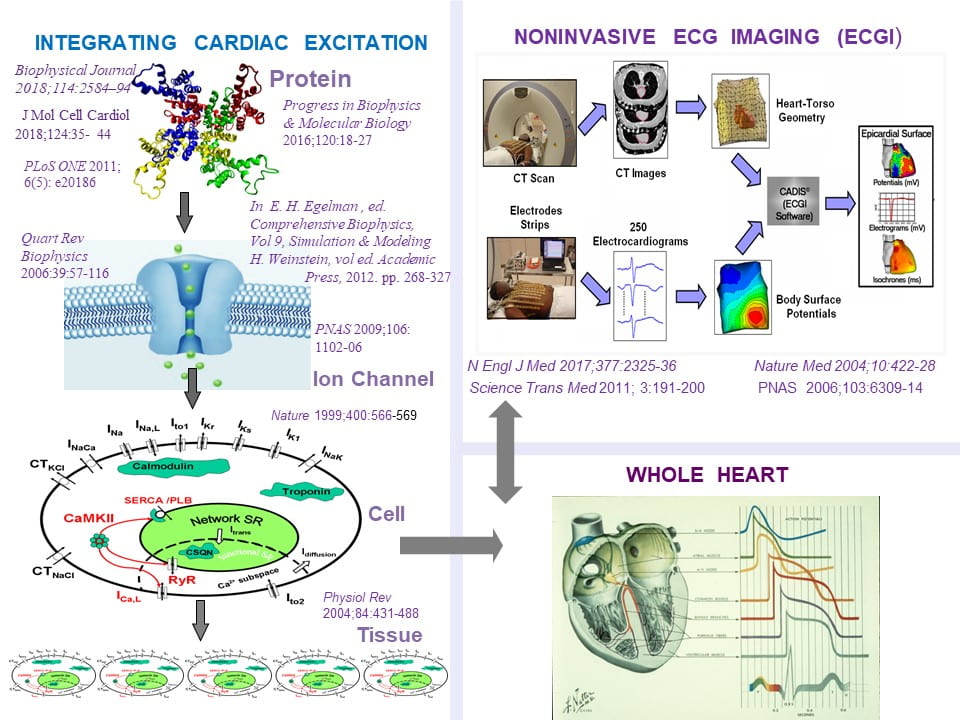Our research aims at understanding the mechanisms that underlie normal and abnormal rhythms of the heart at various levels, from the molecular (ion channel) and cellular to the whole heart. We are also developing a novel noninvasive imaging modality (Electrocardiographic Imaging, ECGI) for the diagnosis and guided therapy of cardiac arrhythmias. Rhythm disorders of the heart lead to over 400,000 cases of sudden death annually in the US alone, and to many more cases of disability and compromised quality of life. Through the development of detailed mathematical models of cardiac cells and tissue, we are investigating the mechanisms and consequences of genetically-inherited cardiac arrhythmias, impaired cell-to-cell communication, and abnormal spread of the cardiac impulse in the diseased heart (e.g. myocardial infarction). ECGI imaging has been tested and evaluated extensively with excellent results in experimental setups and in patients with various heart conditions, including comparisons to catheter mapping and multi-electrode mapping directly from the heart during open-heart surgery. ECGI is currently used to study mechanisms of various cardiac arrhythmias (e.g. atrial fibrillation, ventricular tachycardia) in patients and to guide therapeutic interventions. Our premise is that an integrated approach to the study of mechanisms at all levels of the cardiac system, and the development of novel diagnostic and therapeutic tools will lead to successful strategies for prevention and treatment of cardiac arrhythmias and sudden death.
